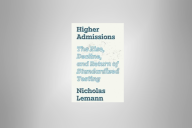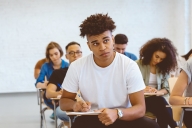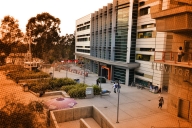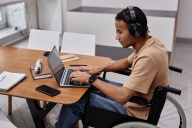You have /5 articles left.
Sign up for a free account or log in.
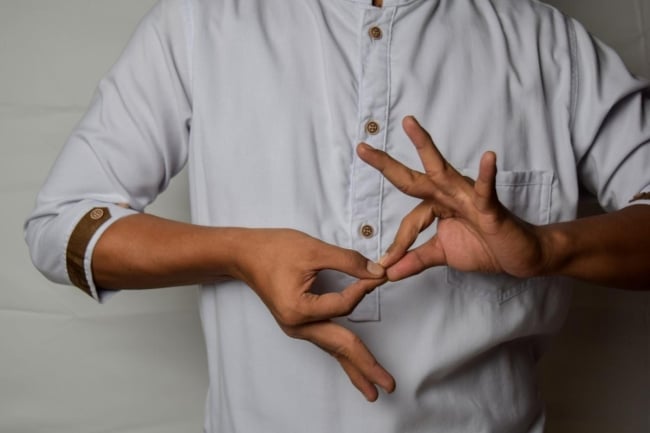
iStock/syahrir maulana
Educational attainment for deaf people, according to the latest research from the National Deaf Center on Postsecondary Outcomes, has been increasing since 2008. In 2019, about 5 percent of deaf and hard-of-hearing adults under 65, according to census data, were enrolled in higher education. That's more than 190,000 people.
Deaf students still face barriers in higher education, but some institutions, departments and individuals are making changes to make that education more advanced, inclusive and accessible.
Some, like the University of Florida, for example, are hiring more interpreters for deaf and hard-of-hearing students. Many colleges and universities contract with interpreters. Within the state, other institutions may have one full-time interpreter, said Jenna Gonzalez, interim director of Florida’s Disability Resource Center. The university is currently carrying out a search to hire four full-time, directly employed staff.
“That’s where we’re going to stand out. We know we need more than one,” Gonzalez said. “Those four staff are going to build relationships with students.”
Bringing interpreters under the university umbrella allows them to build a greater rapport with students and feel more comfortable on a campus.
“It shows our commitment to accessibility and inclusivity,” said Amanda Jackson, assistant director of assistive technology at Florida. “High school juniors or seniors can see that the University of Florida is committed to having interpreters, so they might apply.”
Not all deaf and hard-of-hearing students use American Sign Language interpreters, at Florida or other colleges. A student’s preferred communication method -- whether live captioning, closed captioning, interpreting or lipreading and voicing -- depends both on the student and the kind of class. But interpretation for some classes can require complex vocabulary. At Florida, interpreters with technical expertise sometimes commute from up to two hours away.
Developing technical and discipline-specific vocabulary is something that the signing community is working on, and in the past few years several projects have made efforts to fill the gap. For example, ASLCORE, from the National Technical Institute for the Deaf at Rochester Institute of Technology, began in 2015. The project maintains a website for ASL signs its teams have developed in different academic disciplines, such as those for words like "alkene" and "convection."
Miriam Lerner, former director of the project, said interpreters in academic contexts would sometimes ask students what signs they would like to agree to use for certain concepts. But that is less than ideal for several reasons. For one, students may not have enough of an understanding of any concept to develop a sign at the start of class. If the sign that a hearing interpreter creates catches on, it may have no linguistic underpinning in ASL.
For ASLCORE, it was extremely important that the developed signs be created by deaf signers, not hearing interpreters.
The signs were developed by a content expert -- a deaf person with an extensive background in a discipline -- and a team of deaf “master signers.” Interpreters might discuss their experiences and ad hoc signs they’ve used, but only when asked. ASLCORE started with the philosophy discipline, creating signs for words like “essence,” “ontology” and “epistemology.” It’s important that the signs make sense within ASL linguistics. Signs can build off each other from shared roots and evolve. ASLCORE has now created signs in 10 disciplines.
The need for the project is a result of the fact that deaf people are going further into education and academia, and that for decades hearing educators did not allow ASL to flourish as a language, Lerner said.
“It’s not that ASL was never capable of doing this,” she said. “What this project and other projects are trying to do is to give it the latitude to grow to the level it would have had the educational paradigm not been so deleterious about ASL.”
Now, the project has run out of funding and Lerner has stepped down as its director ( She said she did so, in part, because she believes a deaf person should run it). But if it were restarted, she said, she would want to move on to disciplines like business and psychology.
Other technical or academic signing dictionaries include ASLCLEAR and Atomic Hands. A collaboration between Harvard University and the Learning Center for the Deaf is currently working on developing ASL signs for quantum physics.
Faculty members and graduate students at Gallaudet University -- an institution for deaf and hard-of-hearing students in Washington, D.C. -- and the University of Washington have also developed the ASL-STEM Forum, an online forum for signers to develop new vocabulary together. The process began in 2010 in an attempt to make a more open and collaborative site to develop signs, in a sort of “citizen science,” said Richard Ladner, professor emeritus at the University of Washington.
"It was important to create a repository of STEM signs that allowed for the evolution of signs by its users. Previous dictionaries and repositories were fixed (only a panel of experts determined the 'correct' signs)," Caroline Solomon, co-creator of the site and a professor at Gallaudet, said via email. "Any linguist would say that a language evolves with its users so we wanted to use the crowdsourcing approach to help narrow down to a few suggested signs for a STEM term."
Now there are about 3,000 signs on the site, although Ladner and Solomon have uploaded about 8,000 total terms to be developed. Some words have different meanings in different disciplines and thus deserve different signs, Ladner said, such as the word “tree” in a biology context and computer science context.
“Deaf people for whom signing is their natural mode of communication, if we want them to get into science, then there has to be the language,” Ladner said. “Being part of science is not just reading books and writing papers, it’s communicating.”
The National Technical Institute for the Deaf is developing degrees to train interpreters in specialized material. The interpretation program already has a master's in health-care interpreting and is in the process of launching programs in educational and legal interpreting.
The program is also working on a new track for deaf interpreters, said Keith Cagle, chair of the interpreting department.
“They do work with hearing interpreters who will hear and sort of give them the gist of the message. And then the deaf people who are native users, who have trained in this area as well as a native user of the language, is able to express it in a way that only really native users can,” Cagle said, through an interpreter. “We see the need rising, we see what’s been missing from COVID and these times of BLM and news stations, the need for deaf individuals to be using the language and to have command of the language is really something that’s important.”
NTID also has a program where deaf students can advise interpreters on the language, based on their experiences being in class and using ASL throughout their lives.
“We meet one on one with different interpreters, all interpreters at RIT, about different things -- voicing, receptive skills, vocabulary development, concepts that they’re struggling with. We help them translate it into ASL,” said Marshall Hurst, an M.B.A. student at RIT, through an interpreter. “I grew up and I went to a mainstream school and had an interpreter with me almost every day. I had an exposure to the interpreter concept, so I thought it was great that I could work with the interpreters here.” Hurst is a manager in the program.
The university also has some deaf students work in the admissions department as ambassadors, giving tours and answering questions on panels.
“Our job is to represent RIT and our passion for RIT so students will see that there are a lot of deaf students here and people of color and they can make a connection and we can welcome them to RIT,” said Zee Chauhan, a sophomore at RIT, through an interpreter.
In 2019, NTID started the Randelman program to recruit and retain interpreters of color. The Registry of Interpreters for the Deaf estimates that 88 to 90 percent of interpreters are white.
“You don’t typically find [K-12 ASL classes] in places where there are a large demographic of people of color,” said Kristi Love, director of the program. “Oftentimes students who are Black and brown and of other diverse backgrounds don’t have the options to take ASL as a foreign language.”
In studying for the job, interpreters of color may be the only ones in their cohorts and can feel a lack of support or belonging.
“Those in the deaf community want interpreters who look like them and can connect to them culturally,” Love said. “There are several deaf people who have never experienced having an interpreter who looks like them.” That carries even more importance in certain contexts. At a cultural event where the deaf students and hearing students are of a similar background, but the interpreter assigned doesn’t share that background, the deaf student could be missing out on some of the importance of the event if the interpreter doesn’t have the knowledge of how to share the meaning, she said.
Developments in deaf education, interpretation services and technical language will surely continue, as deaf and hard-of-hearing students pursue higher levels of postsecondary education. Kate Carbett Pollack, coordinator at Syracuse University’s Disability Cultural Center, said that ASL interpretation provided at Syracuse, where she went for her master’s degree, was life changing. In her undergrad studies she wasn’t provided ASL interpreters, an experience that made her sick with stress.
“I knew that I could no longer struggle to hear the way I had been anymore,” she said. “I can’t even tell you how liberating it is to communicate freely.”

